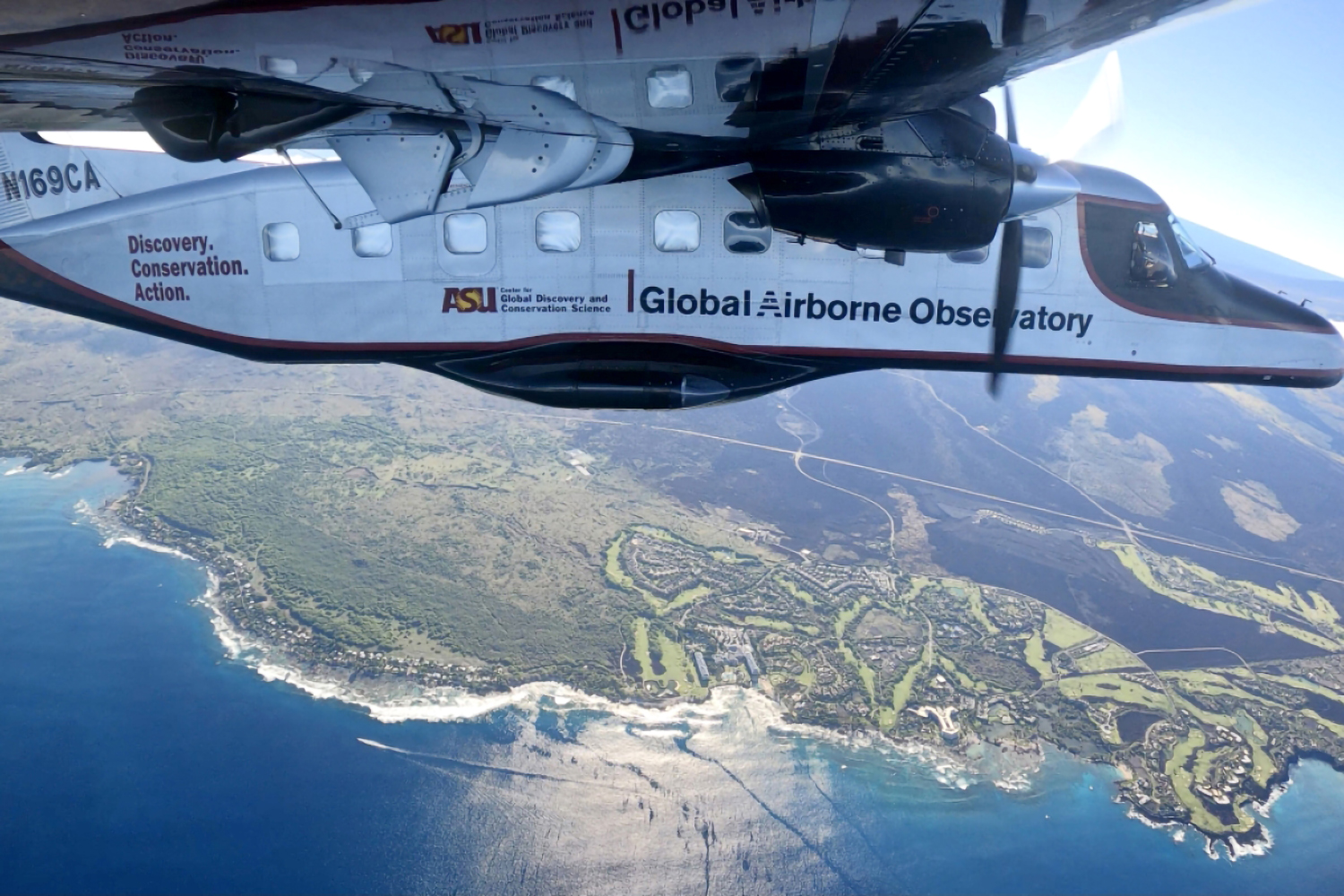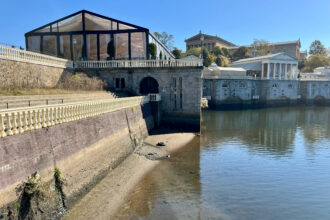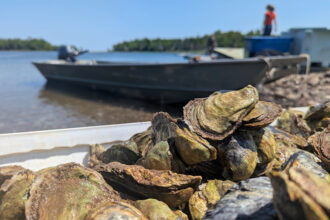For generations, West Hawaii’s picturesque coastlines have been a gathering place for fishing, swimming and ceremony. But those sacred waters are also gathering something else.
Using airborne mapping, field sampling and advanced statistical analysis, researchers at Arizona State University’s Center for Global Discovery and Conservation Science in Hawaii revealed that nearly half of West Hawaii’s coastline is being quietly contaminated with raw sewage.
As a result, coral reefs in bays like Hōnaunau are struggling to flourish, weakening ecosystems that people rely on for food, and harming their ability to protect coastline communities from erosion and rising sea levels. The sewage-contaminated ocean water not only threatens the environment but also exposes swimmers to E. coli, salmonella and other pathogens or parasites that sicken people.
The researchers collected water samples from 47 shoreline sites in the South Kohala, North Kona and South Kona regions. Of those sites, 42 percent had elevated levels of a bacteria that indicates sewage contamination, and the levels were high enough in nearly a quarter of the sites to threaten both the environment and human health, their study found.
“The most alarming thing was how consistently we found contamination at popular swimming sites, places where families take their kids,” said Kelly Hondula, associate research scientist at the Center for Global Discovery and Conservation Science and lead author of the study. “Some of these sites regularly test above public-health thresholds, meaning swimming there poses a higher risk of disease.”
Cesspools and leaky septic tanks are a key reason for the water contamination, the researchers say.
Hawaii banned the creation of new cesspools in 2016, the last U.S. state to do so. But more than 88,000 cesspools, which Hawaii’s Department of Health describes as “little more than holes in the ground,” still operate in the state. Each day, homes and businesses using this inexpensive but ineffective form of waste management discharge more than 53 million gallons of untreated sewage.
Andrea Kealoha, an assistant professor of marine biology and geochemistry at the University of Hawaiʻi at Mānoa, who wasn’t involved with the new study, notes that the use of injection wells in the state also contributes to sewage contamination in water.
“They take the wastewater, all of the wastewater, to facilities in a community, they treat that water, but they don’t really remove the nutrients or the other pollutants,” she said.
What makes the West Hawaii region so vulnerable to coastline contamination is a phenomenon known as submarine groundwater discharge. West Hawaii is built upon the young lava flows of the Hualālai and Mauna Loa volcanoes. The hardened lava, once fluid, has dried up and is filled with cracks, tubes and voids. When homes, businesses and wastewater management plants discharge wastewater into the ground from cesspools, septic tanks or injection wells, it quickly travels through the lava tubes and fractures, emerging under the coast’s tideline.
That process disperses the substances carried along with the waste. Among them is nitrogen, a nutrient that helps plants grow but in higher concentrations can harm marine ecosystems. In such conditions, it’s harder for coral reefs to reproduce and recover after incidents like bleaching.

“The nitrogen that leaks out into the ocean from groundwater contamination and into the reef system stimulates the growth of algae, the kind of algae that grows on the sea floor, like a weed. And that algae overtakes the coral,” said Greg Asner, director of Arizona State University’s Center for Global Discovery and Conservation Science and senior author of the study.
When that algae dies and decomposes on the coastline floor, it consumes oxygen in the water. Too much of that leaves fish and invertebrates unable to survive.
“If we continue on the pathway of not taking action, not improving water quality, we’re going to see more ecosystem loss,” said Jasmine Fournier, executive director of the Ocean Sewage Alliance, which aims to reduce the waste contamination problem. “The things we expect when we go into the water, we might not be seeing as much anymore. We’ll see more algal blooms, more fish kills, fishermen who can no longer maintain their livelihoods because the fish stocks are gone.”
A 2017 law requires all cesspools to be converted to more effective waste management by 2050, but Kealoha said ASU’s findings should prompt more action.
“We have such a hard time as local communities to combat the whole greater climate issue—which comes with ocean warming and ocean acidification—but we do have power to combat these local stressors,” she said.
About This Story
Perhaps you noticed: This story, like all the news we publish, is free to read. That’s because Inside Climate News is a 501c3 nonprofit organization. We do not charge a subscription fee, lock our news behind a paywall, or clutter our website with ads. We make our news on climate and the environment freely available to you and anyone who wants it.
That’s not all. We also share our news for free with scores of other media organizations around the country. Many of them can’t afford to do environmental journalism of their own. We’ve built bureaus from coast to coast to report local stories, collaborate with local newsrooms and co-publish articles so that this vital work is shared as widely as possible.
Two of us launched ICN in 2007. Six years later we earned a Pulitzer Prize for National Reporting, and now we run the oldest and largest dedicated climate newsroom in the nation. We tell the story in all its complexity. We hold polluters accountable. We expose environmental injustice. We debunk misinformation. We scrutinize solutions and inspire action.
Donations from readers like you fund every aspect of what we do. If you don’t already, will you support our ongoing work, our reporting on the biggest crisis facing our planet, and help us reach even more readers in more places?
Please take a moment to make a tax-deductible donation. Every one of them makes a difference.
Thank you,













